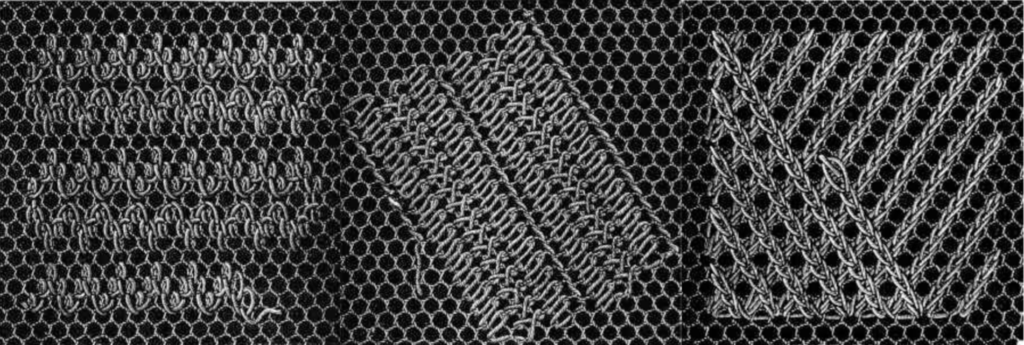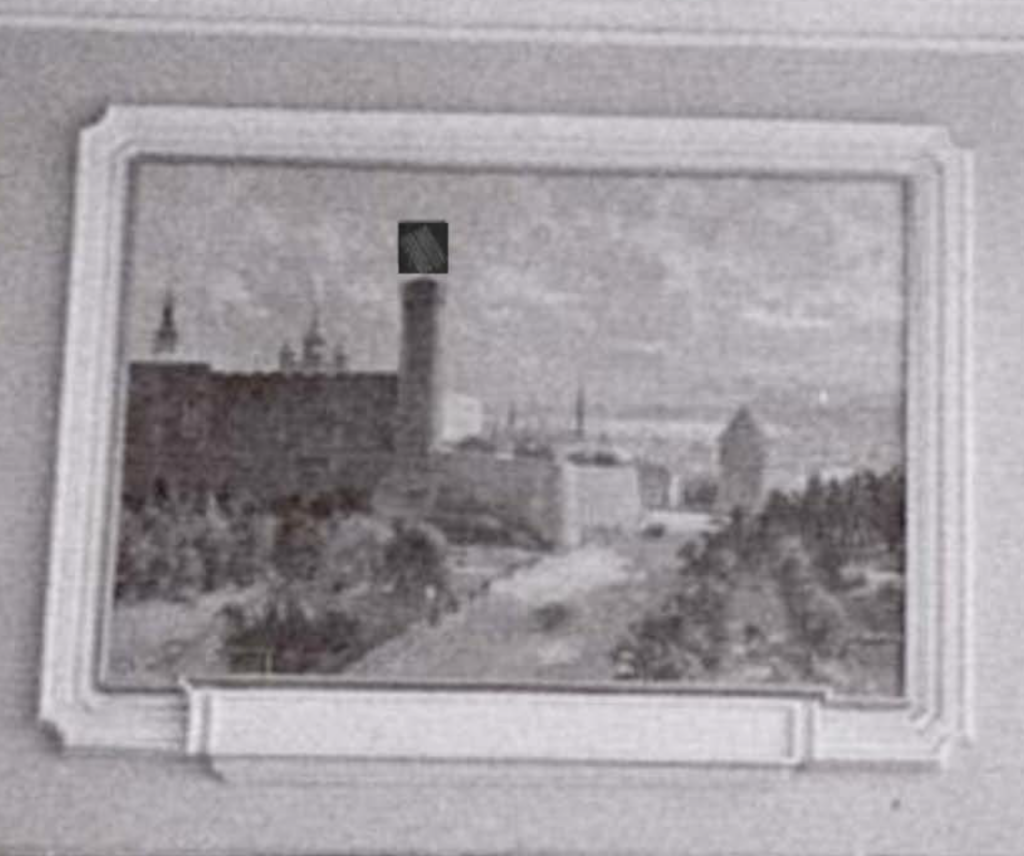The idea of the design addresses the layering and temporality of paintings, using interventions embroidered in the patchwork motif as symbolic ways to rethink the historical context of the works. The interventions in the material are made of textiles embroidered with threads in a black and white color scheme, creating a conscious contrast between the colored painting surface and aesthetically referring to the image of an archival photograph.
In R. Sagrits’ painting with the Red Flag, a small sewn patch is added to the painting surface, which acts as a repair or patching – a visible and conscious intervention that leaves a clearly discernible trace that something has been repaired. In V. Karrus’ painting depicting a view of Moscow, the intervention is more large-scale: stitched textile elements cover the silhouettes of buildings, referring to the stratifications of history and neutralizing and abstracting the recognizably charged view of the city of Moscow.
The patches placed on the painting surface can be gently attached with removable conservation-friendly material, ensuring that the original surface remains undamaged. The intervention focuses on the starting point, in which urban landscapes are not static – they are carriers of emotionally layered stories and can always be rebuilt, repaired.



